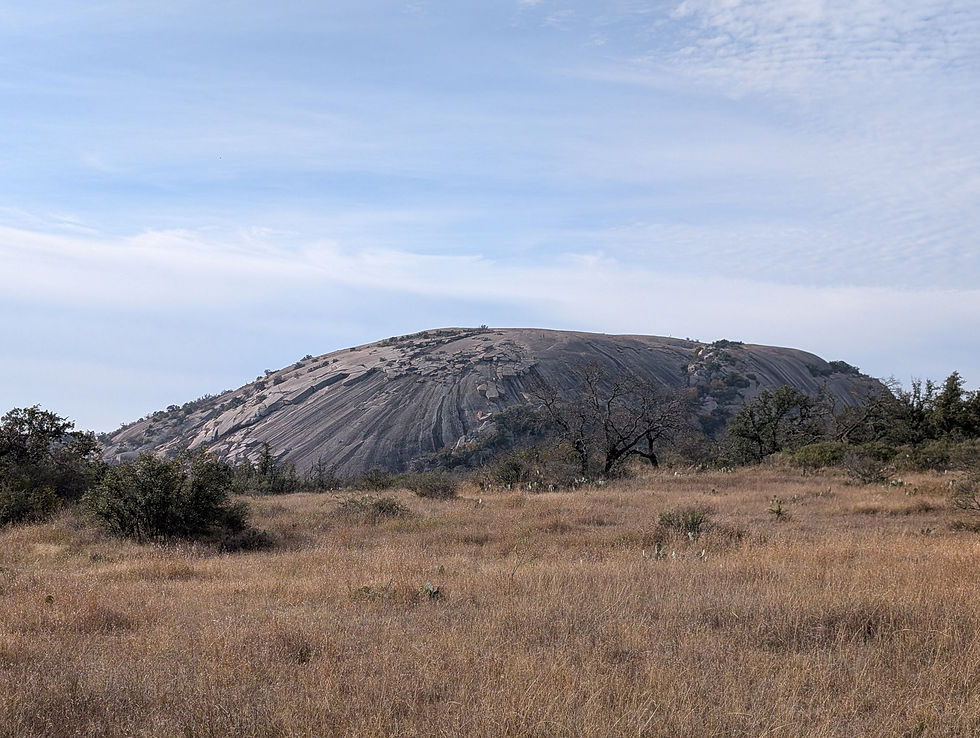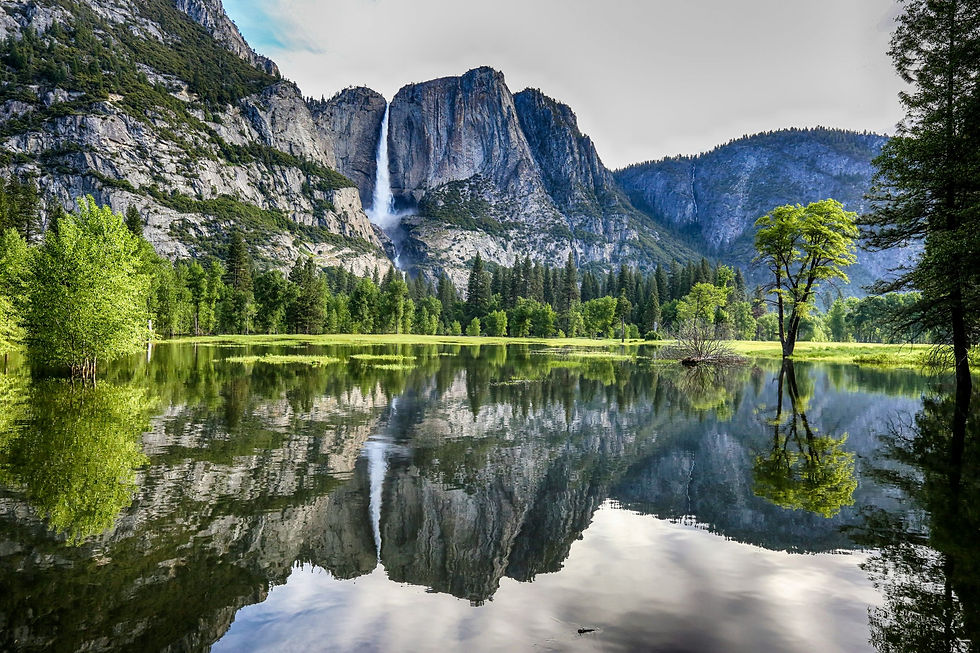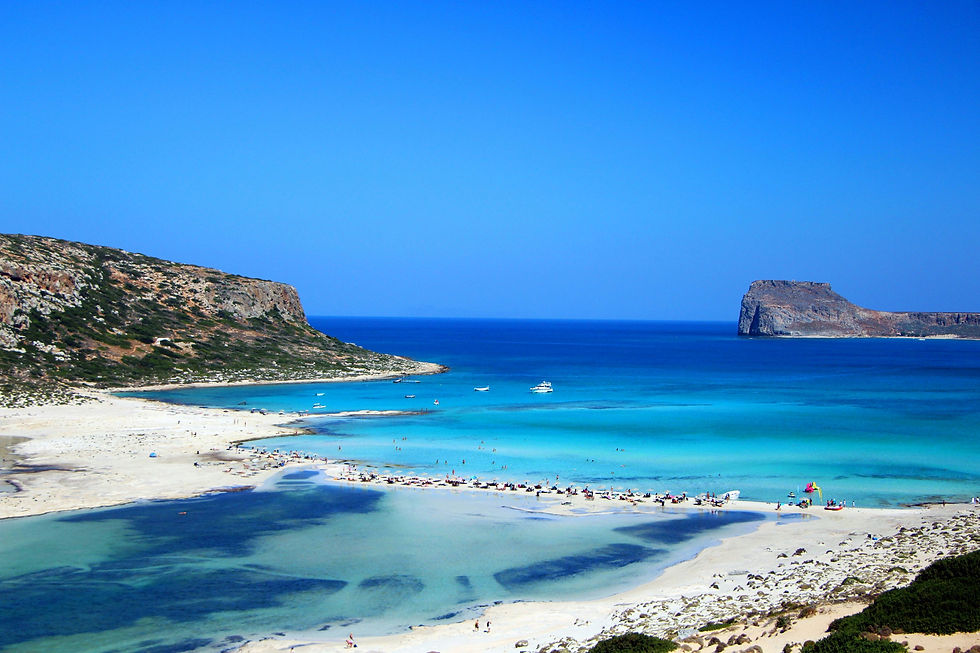Freedom to Explore: Celebrate American & International Destinations
- Kristen Sorbera
- Jul 13, 2025
- 15 min read

As the fireworks light up the sky this July and the spirit of independence fills the air, it’s the perfect time to embrace your freedom to explore. Travel isn’t just about getting from point A to point B—it’s about discovery, joy, connection, and stepping beyond the everyday. Whether you're drawn to the rich landscapes of the U.S. or dreaming of an international getaway, the world is open and ready for you to explore.
Summer can be an incredibly busy time—kids are out of school, work is ramping up to meet quarterly goals, and there always seems to be yardwork waiting for attention. Fortunately, there are plenty of nearby options that offer a chance to take a break and enjoy the outdoors. One of our favorite ways to recharge is by spending the day at a state park. Depending on where you live, the parks around you can offer a wide range of activities and scenery. If you already enjoy camping—or if it’s something you’ve been curious to try—drive-up campsites at state parks tend to be more affordable than those in larger national parks or commercial campgrounds.

Summer can be an incredibly busy time for people: with kids out of school, work ramping up to meet quarterly goals, and the seemingly constant need to do yard work. Luckily, there are options close to home that offer a chance to unwind and explore. One of our favorite ways to take a day-long escape is by visiting state parks. Depending on where you live, the parks around you can offer many different ways to enjoy the outdoors without going far.

If you already enjoy camping—or if it’s something you’ve been wanting to try—state park drive-up campsite fees are often more affordable than larger national parks or commercial campgrounds.You’ll also find plenty of fun activities for all ages, with hiking being one of our favorites. Most state parks have well-maintained, clearly marked trails for a wide range of ability levels—from paved, flat trails that are accessible for strollers and wheelchairs, to steep, rocky scrambles that challenge even seasoned hikers. Prefer to take it easy? Some parks feature lakes and rivers where you can swim, wade, kayak, or paddleboard—perfect for a laid-back day on the water.
Before you head out, be sure to check your state’s park website for nearby options, amenities, and park rules. And don’t forget the golden rule of outdoor adventure: “Only leave footprints” or “Leave no trace.” This includes packing out all trash—even items like banana peels or apple cores, which can disrupt local ecosystems.

One place we recently explored on a day trip was Mammoth National Monument in Waco, Texas. They have 24 fossils of mammoths and other mammals in situ, meaning in the original place. It was really interesting to see them and to learn about their history, how they were discovered, and what they are doing to discover more. We made the trip just for the National Monument, but we are glad we got to spend a few hours exploring.


The first national park, Yellowstone, was created in 1872, and over 150 years later, we now have 63 national parks, but over 400 units in the National Park System, which includes national monuments and national preserves. All of these places are relatively affordable to visit; however, some are practically inaccessible due to their locations in northern Alaska or deep in the Florida Everglades.
National parks offer many activities for different ability levels. Many national parks include a museum that highlights the park’s history, as well as paved, short walking trails that are often accessible to those using wheelchairs. All of the national parks are beautiful and allow you to see the wide array of picturesque landscapes the United States has to offer. Every park is unique, and depending on where you go, it could be vastly different from what you’re used to at home. They all offer opportunities to explore, with trails of varying intensities that you can day hike or, in some cases, do multi-day hikes on. Most offer camping opportunities, but some also have hotels in or near the parks. Some parks have lakes or rivers for swimming, but be sure to follow posted rules, as not every body of water is safe to enter.

We have been to a few national parks; however, we have a long list that we want to visit. We enjoy hiking and taking in the beautiful views, as well as talking to the rangers about what daily life is like at the park and what mammals call the park home. While hiking is one of our favorite pastimes, we also enjoy just sitting in nature with a good book and soaking it all in. Parks like Petrified Forest National Park in Arizona are great places to stop and explore for a few hours if you are driving through the area.


Utah is home to some of the most iconic national parks in the United States. Popular parks like Arches, Bryce Canyon, and Zion draw visitors from around the world with their stunning rock formations, canyons, and dramatic landscapes. But Utah also offers lesser-known gems that are often less crowded, such as Capitol Reef National Park and Dinosaur National Monument (which extends into Colorado). Whether you're seeking popular highlights or quiet trails off the beaten path, Utah’s diverse park system has something for every kind of explorer. Utah is extremely hot in the summer, so it is vital to plan accordingly, and it is highly recommended that everyone drink at least one gallon of water a day while at the national parks. If you plan to hit the trails—even for a short hike—be sure to carry at least 2 liters of water per person, as some trails can be deceptively strenuous. To help replenish lost electrolytes, pack salty snacks or electrolyte supplements. It's also important to wear loose-fitting, light-colored clothing and a wide-brimmed hat to stay cool and protect yourself from the intense sun. Almost all of the National Parks in Utah require a reservation, as they will reach capacity early in the day during peak months.
Arches National Park is located beside the Colorado River near Moab, Utah. This park is picturesque with over 2,000 natural sandstone arches. This area is considered to have some of the darkest skies in the contiguous 48 United States, meaning that it is the perfect place to stargaze. During the new moon, when the moon is not reflecting any of the sun’s light into the night sky, you can see thousands, if not millions, of stars along with the Milky Way.

Zion National Park is the busiest park in Utah and was the third most visited park in 2024 out of all of the national parks. Zion is most known for its intense hikes. These hikes, like The Narrows and Angel’s Landing, are incredibly tough and dangerous hikes, meant for experienced hikers. To limit how crowded they get, the park requires you to get a permit before hiking these trails. Even as a moderately experienced hikers, we would not hike Angel’s Landing due to the dangerous and rapid weather changes. We would also be cautious about the cyanobacteria in The Narrows, so please do your research before planning to hike either of these trails and decide if you feel comfortable with the risks. If you aren’t comfortable with such strenuous hikes, Zion offers many easy, paved trails and moderate hiking trails. They all offer unique and beautiful views of the park.

Dinosaur National Monument is located on the Utah/Colorado border and covers over 210,000 acres, offering lots of places to explore. Dinosaur has…you guessed it, fossils! They also have ancient petroglyphs and pictographs. At the Quarry Exhibit Hall, you can get up close to huge dinosaur bones that are partially exposed in the rock. Dinosaur is fully in the desert, so expect little to no shade as you explore and plan accordingly. Their trails are mainly easy to moderate with very few difficult trails, so this is a good option for those who want very little elevation gain. Some of the easy trails will take you to where the petroglyphs are. This area is home to black bears, mountain lions, and more, so be sure to keep your eyes open and keep your distance. Dinosaur is another great park for stargazing, as it is in the desert and gets remarkably dark at night, so we highly recommend camping in one of their six campgrounds.
These parks offer more than just hiking—guided tours, bicycling, camping, rock climbing, and even horseback riding are available, and we can help you book all of these activities to enhance your adventure.


Located in northwestern Montana along the Canadian border, Glacier National Park covers over 1 million acres, including parts of the Rocky Mountains. It is one of the most popular parks to visit during the summer, as temperatures are mild compared to much of the United States. The highs in July can range from the high 50s°F to low 80s°F, and the lows tend to be around 40–55°F.
In the summer, most everything the park has to offer, like visitor centers, campgrounds, roads, trails, and hotels, are open, whereas in the colder months some of these can close.
The scenic Going-To-The-Sun drive is a bucket list item, where there are many pullouts with spectacular views and several trailheads. It is 52 miles long with several visitor centers along the way. Be sure to start this drive early, as it can be crowded and traffic jams can occur when wildlife like elk or bighorn sheep need to cross.
This national park offers guided hiking tours where a park ranger will take you and a small group up to see one of the park’s largest glaciers. There are also guided horseback riding and boat tours available at the park. If you are very adventurous, this park has some rapids that you can raft in with a raft guide.

Glacier National Park has over 700 miles of trails, all of varying degrees of difficulty. Outside of certain areas, there is no cell service, so if you are going to hike in the backcountry, it is important to have a map as well as a satellite device in case you need to call for help. These devices include the Garmin InReach, and some newer phone models also have satellite capabilities, although I wouldn’t recommend relying on your phone for multi-day hikes, as the battery won’t last as long as other devices. Be sure to also bring plenty of water and bear spray, check trail statuses before you go, and always leave no trace!
If you need a wheelchair accessible trail to explore, The Trail of the Cedars and Running Eagle Falls are both nature trails that are self-guided and feature signs throughout about the trailside features and plants.
As for the other trails, there are too many to go over the individual features here, but they are all clearly marked with their elevation gain and terrain, such as “mostly flat asphalt path” and “gains 1200 ft then drops 1000 ft.” These will give you an idea of what to expect, but you can always talk to a ranger at a visitor center to see their recommendations for what you want to see and how intense of a hike you want.
If you want a more relaxed activity, there are river tours that have a scenic float, which is a lot calmer than the rapids. There are also plenty of places to camp. Glacier National Park is home to thousands of different plant species, animals, insects, snakes, and fungi, so there is a high likelihood that you will come across some interesting things to see. It is important to always keep your distance and know the park rules regarding how far to stay back and what to do if you encounter a more dangerous animal, like a bear.
Due to the size of the park, the number of trails, various wildlife, and differing terrain, Glacier National Park is a fantastic place to go exploring!

The freedom to explore extends beyond borders—and some of the best travel memories come from immersing yourself in new cultures, languages, and landscapes. While there's incredible beauty and adventure to be found right here at home, there's something uniquely enriching about stepping into a new part of the world and seeing life from a different perspective. Whether it's wandering through vibrant street markets, tasting flavors you’ve never tried, or connecting with locals whose stories stay with you long after you return home, international travel offers a kind of freedom that feeds the soul. Ready to go beyond the familiar? Here are a few unforgettable destinations worth adding to your list.


If you're looking for a more traditional vacation destination with plenty of opportunities to explore, Greece is an excellent choice. With countless islands to choose from, you’ll find a mix of luxury resorts and off-the-beaten-path escapes—offering something for every type of traveler. The weather during the summer can be intense, with daytime highs around 90°F and lows in the mid-70s°F, so it’s best to plan your outdoor adventures for early in the day before the heat sets in.

Naxos is an island with a perfect balance of the two. Being the largest island in the Cyclades island group, it is a semi-popular tourist destination, but since there are no cruise ports on this island, it doesn’t feel overcrowded by tourists. While it is the largest island, it isn’t big enough that you need a rental car, as their public bus goes to most of the places people want to visit.
Aside from exploring the city of Naxos, there are other small towns around the island, such as Apiranthos and Halki, which offer unique stores, beautiful architecture, and delicious restaurants. Naxos has a rich mythological history, including the belief that it was the nuptial isle of Dionysus. This rich history means there are plenty of historical sites to explore, such as a castle and Apollonas Kouros, which is an unfinished marble statue of either Apollo or Dionysus. The Temple of Apollo is a popular spot to watch the sunset over the turquoise water. In addition to all the historical sites and towns you can explore, there are several beaches where you can relax or swim. If you want to visit a nearby, smaller island, some ferries go between them.

Crete is the largest and most populous Greek island. It is a very popular destination, especially in July, which means it can be better suited for tourists than some other Greek islands, with a wide variety of tours, transportation options, and things to do. This island has many beaches, some of which are more remote than others. Because of its mountainous terrain, deep gorges, and flowing rivers, hiking is a popular activity for those looking to explore; however, the hikes are often strenuous and require carrying plenty of water.
In July, there are many festivals held on the island, such as the Rethymnon Wine Festival, which lasts for two weeks and features local music and dancing. Archaeological sites like Knossos and Phaistos are just a few of the many places where you can explore and learn about the Bronze Age on the island.
There are many tours offered that can take you around the island to the popular spots, or you could rent a car or scooter. Along with the beautiful sites and rich history, Crete has phenomenal restaurants and street food vendors offering delicious items such as bougatsa—a cheesy custard tart with filo pastry, topped with cinnamon and sugar.


Iceland is a great place to visit in the summer for a multitude of reasons, but as someone who lives in the southern part of the United States, the weather in Iceland is definitely the biggest draw for us. The average daytime temperature in July is 55°F, and the average low is 48°F. They also have 20–23 hours of sunlight a day during the summer, which means there is so much time to explore all Iceland has to offer. Seeing the sun still up at midnight is also a cool experience!
Iceland has a lot of wonderful outdoor activities, such as hiking and exploring waterfalls. More uniquely, they have lava tube caves that you can explore—formed by a volcanic eruption around 5,000 years ago, these caves are known for their vivid colors and fascinating shapes. You can also book a tour to explore glacier ice caves, which are formed at the bottom edge of a glacier.

There are many scenic drives you can do around Iceland. The most popular is an 820-mile road called The Ring Road. This route offers a variety of scenery, including mountains and fjords, and is home to many of Iceland’s most iconic sites. It is recommended to take at least a week to drive and explore this road, but some tours will take you to specific highlights. Renting a car in Iceland is relatively easy, especially for U.S. travelers. Be sure to look up road laws before you go and get full rental insurance, as cracked windshields from loose rocks are common—and the insurance will save you from paying out of pocket.
Iceland has a large variety of wildlife, and there are several tours you can take to see them; however, you also have a good chance of spotting them on your own while exploring. Whale watching is extremely popular in the summer, as many species migrate north to cooler waters with abundant food. Puffins are also very active in the summer and are easily seen along coastal cliffs. The only native mammal to Iceland is the arctic fox—an adorable, small fox species. Over 70 bird species fly to Iceland to breed in the spring and summer, including the snowy owl and white-tailed eagle, so you may be able to spot some rare and beautiful birds on your trip.

There are many tourist attractions in Iceland, such as the Blue Lagoon, but in this blog, we wanted to focus on nature and exploration. If you're planning a trip to Iceland, make sure to allow enough time to see all the island has to offer.

If exploring the outdoors is not your ideal way to spend the summer, or if it's just too hot for you to do so, there are many great cities and towns that still offer plenty of exploration opportunities. One such town is Montreux, Switzerland.

Montreux is a resort town and a popular destination during the summer. Located on Lake Geneva, this town has a very mild climate, with the average high in July in the mid-70s°F and lows in the 60s°F. The Alps behind the town make the area breathtakingly beautiful. There are many hiking trails and swimming opportunities in the area if you want to explore the outdoors in milder weather.
Freddie Mercury lived in Montreux off and on for several years before his death. Queen also recorded six albums there. In his honor, a bronze statue of Freddie Mercury has stood on the lakeside promenade since 1996. Near the statue, there is a museum called Queen Studio Experience, which is a free exhibit about the band and their history with Montreux.
On the lake, there is a medieval castle named Chillon Castle. The castle has attracted many writers and poets, such as Victor Hugo and Lord Byron. It is open to the public for tours, with a fee of around $19 USD. The tour is offered in many languages, including English, French, and Japanese. There’s even a café on-site, along with a beach, so you could easily spend half a day exploring the grounds.

There are several tours offered in the area, most of which will take you by train further into the Alps. These tours can include visits to a chocolate factory, a local cheesemaker, or multiple vineyards in the area. Not only will these tours fill your stomach with delicious food and drinks, but you’ll also get a breathtaking look at the mountains, covered in lush green trees.

When the Heat Is Too Much: Cooler Ways to Explore
While summer is the perfect time to get outside and explore, extreme heat isn't ideal for everyone—especially young children, older adults, and anyone with heat sensitivity or medical conditions. If high temperatures are a concern, consider saving your outdoor adventures for early fall, when the weather is still pleasant but far more comfortable. Late summer and early autumn—particularly September—can be the sweet spot for visiting places like national parks or Greece, with fewer crowds and cooler temperatures.
That doesn’t mean you have to skip exploring entirely! There are plenty of indoor activities that are just as enriching.
Indoor Exploration Ideas
Museums are a fantastic option. Whether you're interested in art, science, or history, most cities have museums that offer engaging, air-conditioned escapes for every interest and age group. If you're traveling with children, consider stopping at a children’s museum, where hands-on exhibits and interactive play zones can keep kids entertained for hours in a safe and stimulating environment.
Try Something New (and Tasty!)
Another great way to explore indoors is through local food halls. These vibrant spaces feature multiple food stands or small restaurants all in one place—perfect for trying a variety of cuisines without committing to a full meal. Sample small plates, discover new flavors, and turn your outing into a culinary adventure, no sunscreen required.

No matter your preferences or the season, the freedom to explore means finding the travel experiences that inspire you most. Whether it’s hiking through majestic national parks, wandering the charming streets of European towns, or discovering indoor cultural gems on a hot summer day, there’s a world of adventure waiting just for you.
So go ahead—plan your next getaway with confidence, knowing you can explore at your own pace, in your own way. After all, travel is about making memories, broadening horizons, and savoring the journey as much as the destination.
Where will your freedom to explore take you next?
Ready to start planning your next adventure? Subscribe to our newsletter for exclusive travel tips, destination highlights, and special offers delivered right to your inbox.
Follow us on Facebook to join a community of explorers sharing stories, inspiration, and insider deals.
Let’s make your next trip unforgettable—together!
Tropical Sunset Travel, LLC is an expert travel agency based in Charleston, South Carolina. We book travel for couples, families, and groups to travel to destinations around the world. No matter what type of vacation you are dreaming of, our travel services can assist you. We also feature top vacation package options to help inspire you! The Tropical Sunset Travel Blog is a great place to learn about top destinations and vacation options. Please visit our website for agency information and more. Please follow us on Facebook and Instagram for more travel information and deals!

Comments